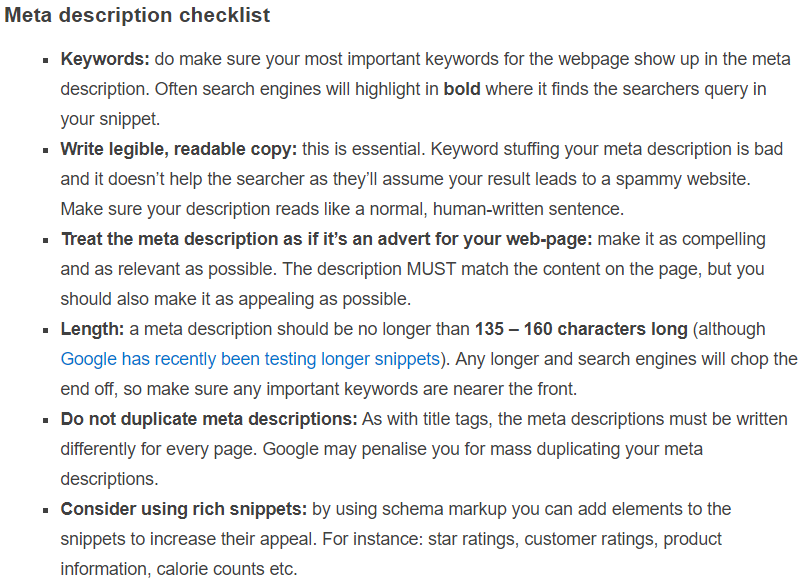
Back in 2016, my colleague Christopher Ratcliff wrote an excellent how-to guide about meta descriptions[1] here at Search Engine Watch.
Much of what is included in that article is still useful. The good and bad examples Chris analyses are still on point and you would do a lot worse than to write your own descriptions according to his takeaway checklist even two years down the line.
But as is case in the world of search, things are always changing. SEO copywriters and marketers need to be adapting to an ever-evolving SERP landscape across multiple screens and taking into consideration Google’s oft-tweaked algorithm.
Google is increasingly unpredictable with how it displays meta descriptions. Today, the length at which it truncates descriptions can vary significantly from result to result. Sometimes the service will auto-generate descriptions or amend them. We are even seeing SERPs with far less descriptions in use at all with the rise of other rich features such as answer boxes and carousels.
Let’s take a look at some examples and consider meta description best practice for 2018.
First things first – what are meta descriptions?
Meta descriptions are a short piece of written content marked up in the HTML of a webpage.
Good examples typically elaborate on the information given in the title tag and aim to entice the searcher to click through. They might give a flavour of the content on that particular page by describing it…
…or providing an excerpt…
They sometimes give a broader description of the site.
And if the result is a branded one, the meta description might describe the brand more generally.
We often associate meta descriptions





